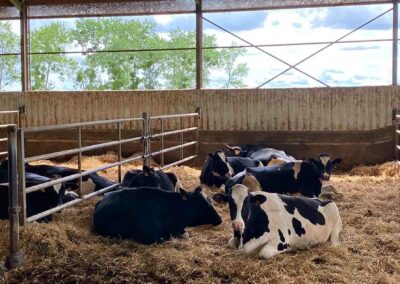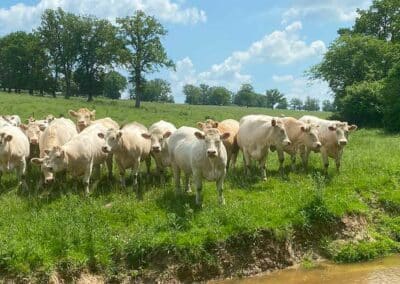NEWS & EVENTS
Understanding and eliminating acidosis in cattle: towards healthier, more sustainable farming
The premium natural solution against acidosis: the Aliplus method
The best answer to bovine acidosis is now available thanks to a nutritional innovation: the Aliplus cereals method. This unique product, developed through partial hydrolysis of starch and cellulose and enriched with specific nitrogen (ALIPLUS), makes it possible to include large amounts of cereals in the ration without the risk of acidosis:
- • 3 to 8 kg for dairy production
- • Ad libitum for fattening
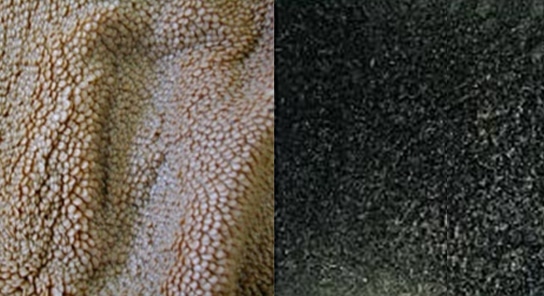
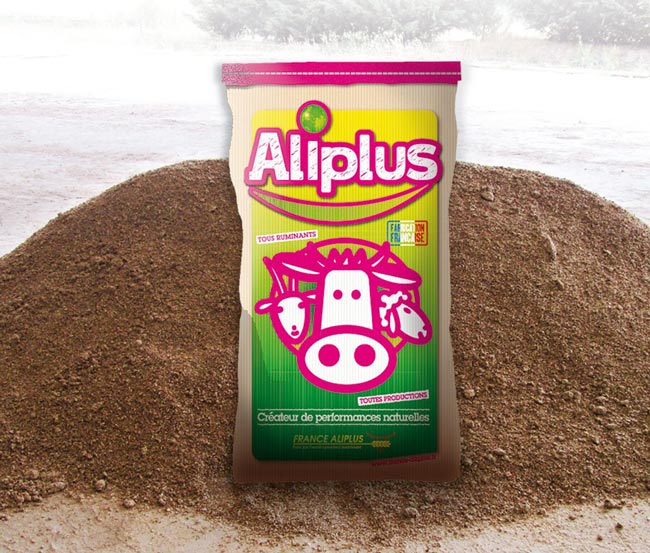
Aliplus-treated cereals offer much more than just an energy source:
- • They actively promote rumination and salivation, strengthening the rumen’s natural buffering capacity.
- • They support optimal digestion, keep animals calmer, and reduce stress.
- • Their balanced nutritional profile (UF, PDIN, PDIE) makes them a complete, high-performance, and perfectly digestible feed.
- • Thanks to their prebiotic qualities, they enrich the rumen’s flora and fauna, ensuring a robust and diverse microbiome.
Integrating Aliplus-treated cereals into the diet means choosing optimal digestive safety, better health, and sustainable performance for your animals.
What is acidosis in cattle?
Acidosis is a common digestive disorder in cattle, caused by a pH imbalance in the rumen, their first stomach. It occurs when acidity increases, often due to a diet too rich in fast sugars (cereals, silage) and too low in fiber. This imbalance harms the rumen’s microbial flora, which is essential for digestion, putting the animals’ health and productivity at risk.
A cow can suffer from chronic acidosis without showing clear symptoms! It is often performance analysis or recurring issues that raise suspicion. .
The two faces of acidosis: acute or chronic
Acute acidosis: sudden and severe
- • Appears within hours after massive ingestion of unsecured cereals.
- • Striking symptoms: animal lying down, bloated flank, liquid diarrhea, severe dehydration, rapid breathing, laminitis.
- Acide rumen (pH < 4,5), foul-smelling rumen fluid, no foam.
- • Life-threatening emergency: very high mortality if not treated quickly.
Chronic acidosis: silent and insidious
-
- • Very common but often overlooked, as there are no immediate visible clinical signs.
- • Manifests through recurring complications:
- Unexplained drop in production
- Lameness (chronic laminitis)
- Delayed breeding, abortions
- Soft dung, digestive disorders
- • Diagnosis is based on careful observation of the herd, feeding behavior, and a rumen pH fluctuating between 5.2 and 5.8.
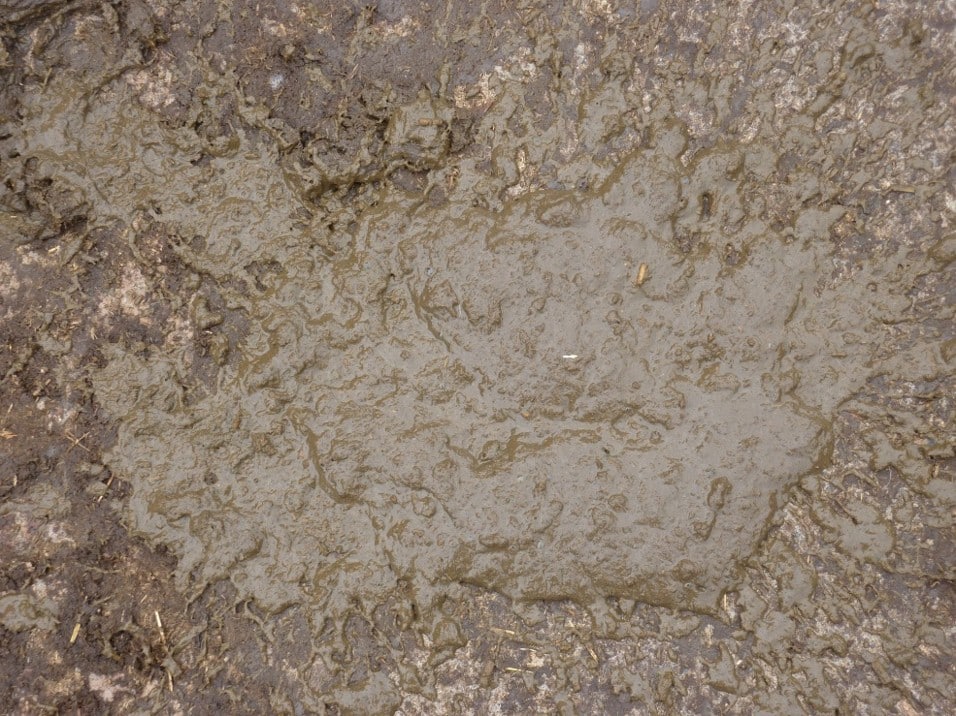
The impacts of acidosis on cattle health
Acidosis is not just a mild discomfort:
- Dung becomes soft, liquid, sometimes with undigested feed, indicating poor assimilation.
- Acidity gradually destroys the rumen papillae, which are vital for nutrient absorption.
- Chronic acidosis promotes ovarian cysts, disrupting reproduction.
- Cattle become more vulnerable to stress, inflammation, and chronic diseases, which lowers their welfare and lifespan.
The crucial role of rumination and saliva
Rumination stimulates saliva production, which is a powerful natural buffer against acidity. A cow can produce between 100 and 200 liters of saliva per day, rich in bicarbonate and phosphorus, maintaining an optimal pH above 6.3.
- The richer the ration is in fiber, the more rumination and salivation occur, lowering the risk of acidosis.
- Conversely, a low-fiber ration reduces rumination, decreases saliva production, and increases the risk of acidosis.
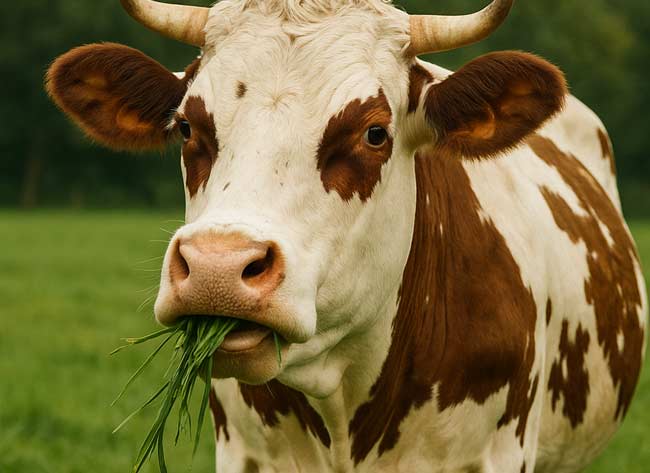

How to effectively eliminate acidosis: good practices
To prevent and eliminate acidosis, you must:
- Promote fiber and prebiotics in the ration to stimulate rumination and salivation, and strengthen the rumen’s buffering effect.
- Gradually adapt energy intake so that the rumen microbiome can adjust without imbalance.
- Use natural complementary feeds, such as Aliplus-treated cereals, which act synergistically with the ration to stabilize rumen pH at an optimal level, boost rumination, and prebiotic-effect the ration — supporting overall digestive health.
Benefits of eliminating acidosis
By eradicating acidosis with a safe and adapted nutrition plan, you offer your animals:
- Better health, improved nutrient assimilation, and stronger immunity.
- Sustainable welfare, calmer animals, and less stress.
- Increased profitability, with more productive animals, longer lifespans, and fewer veterinary interventions.
Aliplus-treated cereals are the innovative, natural solution to eliminate acidosis — whether acute or chronic — ensuring your cattle’s welfare and unlocking the full potential of your farm.
Symptoms and consequences of ruminal acidosis in cattle
Ruminal acidosis is a serious disorder that disrupts the digestive function of cattle and can have major impacts on their health and productivity. The symptoms are numerous and affect the digestive system, general metabolism, and other vital organs.
Digestive and ruminal impacts:
- Reduced rumen motility: Acidosis decreases rumen contractions, leading to indigestion, total loss of appetite (anorexia), and bloat due to accumulated gas.
- Dehydration: The increased osmolarity in the rumen draws water from the bloodstream into the digestive tract, causing dehydration and reduced blood volume (hypovolemia).
- Diarrhea: The digestive content, now liquid, passes rapidly into the intestines, causing profuse, light-colored or yellowish diarrhea, often with gas bubbles and undigested fibers. In advanced stages, absence of diarrhea is a very poor prognosis sign.
- Damage to digestive walls: Excess acidity damages the rumen lining (rumenitis) and encourages bacteria to enter the bloodstream, possibly causing abscesses, especially in the liver and abdomen. Abomasal ulcers may also appear.
Systemic impacts:
- Blood acidosis and shock: Dehydration, hypovolemia, and lactate absorption through the rumen wall lead to metabolic acidosis, which can cause shock.
- Organ damage: Blood acidosis worsens dehydration and can block the Krebs cycle, which is essential for cellular energy production. This leads to oxygen deficiency (anoxia) in cells, causing degenerative lesions in the liver, kidneys, and heart — a sign of a serious systemic syndrome.
- Laminitis: Acidosis can trigger acute or chronic laminitis, often affecting all four limbs. Animals show hesitant gait, may remain lying down — a condition sometimes mistaken for milk fever, especially after calving.
- Nervous disorders: Cerebral cortex necrosis may occur, either directly due to acidosis or because bacteria destroy vitamin B1 (essential for the nervous system). Signs can include central blindness without visible eye lesions.
- Immune suppression: Immune function declines, especially macrophage efficiency, weakening the immune barrier and making the animal more vulnerable to other infections.
- Various complications:
- Early: Fungal rumenitis which may progress to fatal peritonitis.
- Delayed: Chronic laminitis, abortions (especially late gestation), infertility due to energy disorders, enterotoxemia (Clostridium proliferation), caudal vena cava thrombosis.
Ruminal acidosis must be taken very seriously. Its consequences, sometimes irreversible, affect digestion, reproduction, lifespan, and herd profitability. Prevention and adapted nutritional management are the best weapons to protect your cattle’s health.
Would you like to give your cattle a safe, stable ration that enables them to produce more, better, for much less cost and with high-quality production?
Find us and get in touch:
Our pilot farm is located at 53 route de Lenax, Neuilly-en-Donjon. You can reach us at +33 4 70 31 04 55.

53 route de Lenax
03130 Neuilly-en-Donjon
France Aliplus Welcome, Sales & Pilot Farm (by appointment only)
Tel: +33 4 70 31 04 55
Our Products Aliplus Complementary Feed Alimaya Minerals Aliplantes Herbs
Testimonials FAQs Videos News Contact
Follow us on social media
© France Aliplus – Legal Notice – Privacy Policy – Site Map

